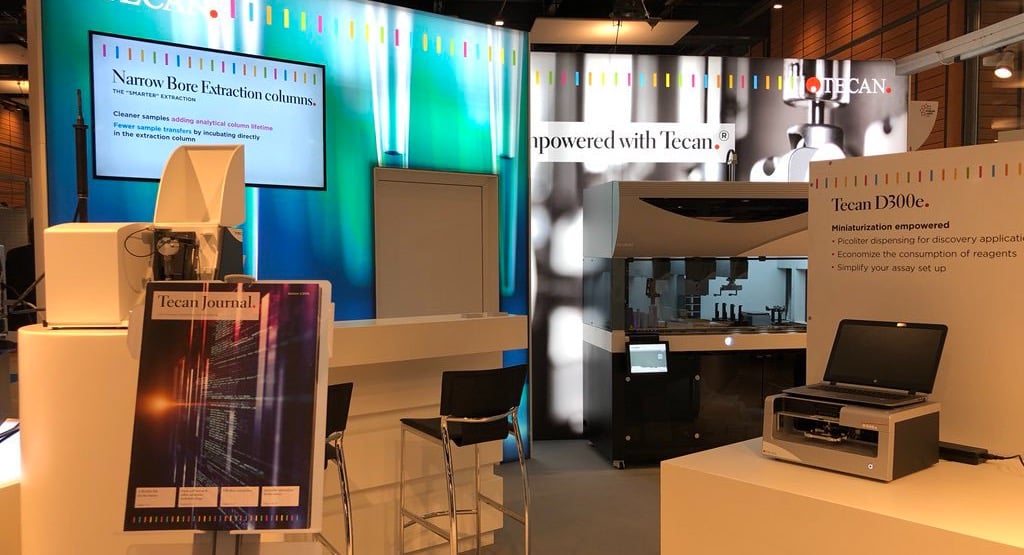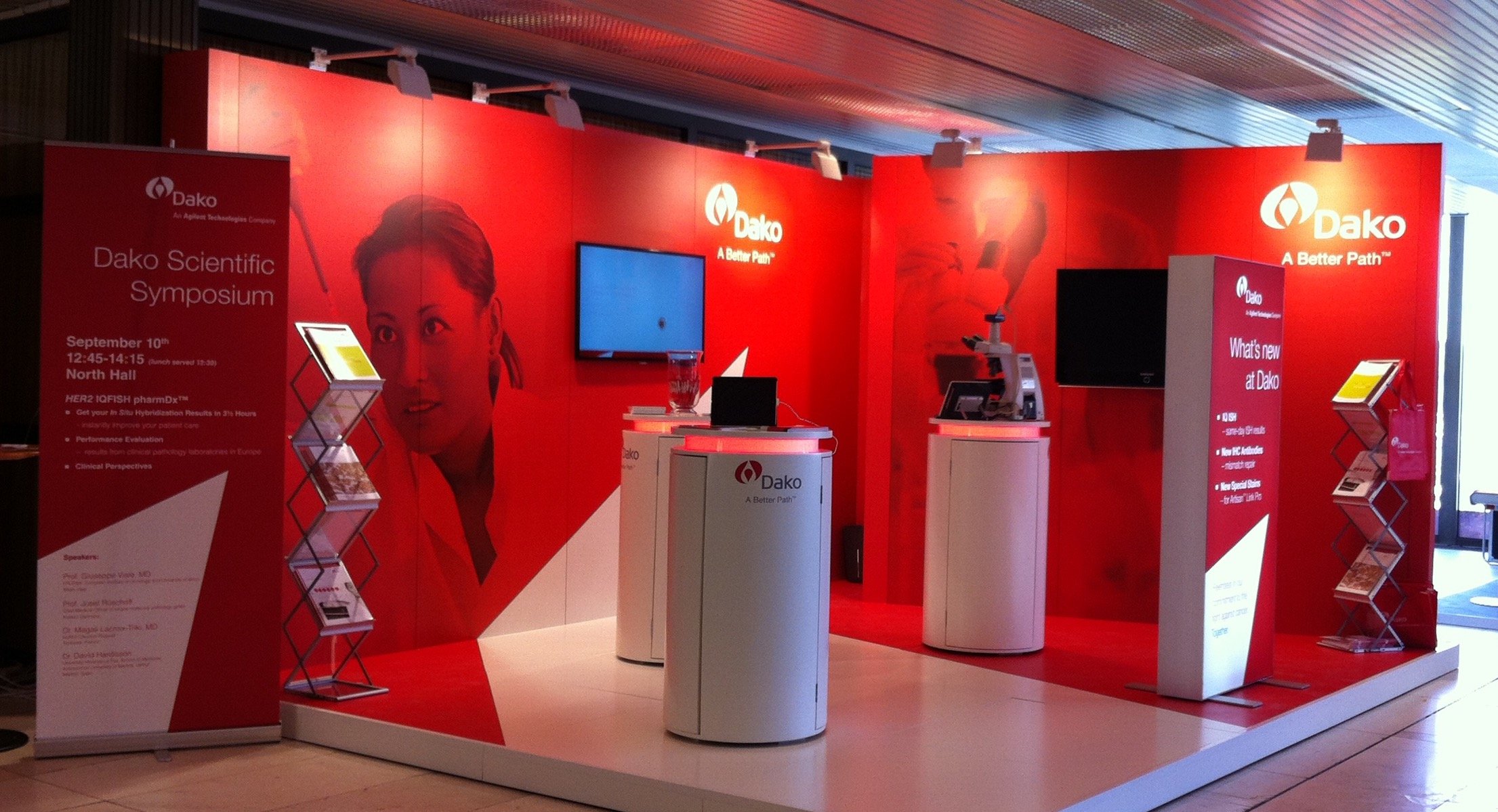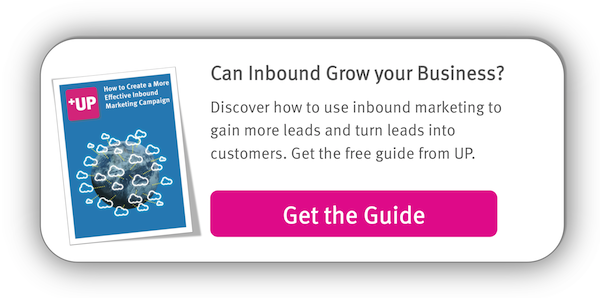Few life science marketers would disagree that industry trade shows and conferences are an important part of the marketing toolkit. Whether you are organizing your own event, or attending as a participant, exhibitor or both, the power and energy of face-to-face interactions is something that no other communication medium can match.
But trade shows are a significant investment, and digital marketing channels give an increasingly good ROI. So is it still worth keeping trade shows on your agenda for 2019? For me, the answer is a resounding YES, and here are some key reasons why...

Trade shows are a unique and highly valued communication medium.
There’s no doubt that digital marketing tools have earned their rightful place among the most valued marketing tactics and will continue to become more powerful and sophisticated year on year. Nevertheless, human beings are social creatures, designed through millennia of evolution to thrive on face-to-face communication and group dynamics. That’s why trade shows and other live events have a number of compelling benefits that can’t easily be matched by other media—for example:
Efficiency of data collection and networking
Trade shows bring together a high concentration of engaged target audiences who are focused on your market or niche, receptive to your message and potentially primed to purchase your product and services. During the course of the event, you have direct access to C-level decision makers, key industry opinion leaders, subject matter experts, suppliers and potential partners—all under one roof.
The costs of a face-to-face meeting with a prospect in their office has been estimated to be about $259, compared with just $142 to meet with them at a trade show.
Moreover, provided you make arrangements well in advance of the show, you can usually fit in many more appointments at a trade show than would otherwise be manageable during a typical work week, mainly because there is no travel involved and busy executives are less preoccupied with their usual day-to-day activities.
The power to influence
Of course digital marketing channels can be equally or even more efficient in reaching target audiences around the globe, but trade shows provide a unique environment with much more potential to influence. By interacting in person, you will be able to pick up on subtle body language and facial cues that are easily missed when communicating through digital channels. As a result, you can modulate your approach as needed, and tailor your message differently depending on where prospective customers are in the buyer’s journey.
You can address concerns on the spot, and immediately correct any misperceptions people may have developed about your offering and how it stacks up against the competition.
On top of all that, you have the opportunity to significantly raise brand awareness by creating a multi-sensory experience that your target customers will remember long after the event.
More equal access to target audiences
In the digital marketplace with its pay-per-click advertising models, visibility of your ads in search results and on relevant web pages is unpredictable and can easily drop into oblivion when competing with multinational companies that have a massive marketing budget.
By contrast, the costs of exhibiting at trade shows are more transparent, with a relatively low barrier to entry, and every exhibitor has more or less equal access to the same participants. With good preparation and a modest investment in an eye-catching booth, quality literature, fun freebies, etc., newcomers and small-to-medium sized businesses can compete with major players on more equal footing.
Ability to build trust
When prospective customers can touch your products, see them in action, thumb through the relevant literature, get credible answers from your product specialists, shake hands with your sales reps, bond at social events, etc. it can build a high level of trust, which these days is in short supply online. Even if these interactions do not lead to a direct sale, when prospective customers later browse the internet searching for products and services, they are more likely to recognize your brand and believe your claims—and that added level of trust may just tip the balance in your favor when it comes to making a purchase.
With benefits like these, it’s not surprising that businesses are continuing to invest up to a quarter of their total marketing budgets in trade shows and conferences, ranking them as their first or second most valued marketing channel.
Even in the face of trade uncertainties and global economic slowdown, the exhibition industry showed 2.4 percent year-over-year growth in revenues in the third quarter of 2018, and attendance was up by 1.1 percent.
The value of trade show attendance for marketers
Nearly 80% of the average events budget is allocated for hosting, sponsoring and exhibiting at in-person events like trade shows and conferences. While it makes good sense to invest the lion’s share of your event marketing budget in establishing a trade show presence, launching a new product, promoting your brand, and sending your best sales specialists to generate leads and close deals, there’s a lot to be gained by sending one or more people from the marketing team too. (And just to be clear, that means sending them to participate fully as attendees—not keeping them chained behind the exhibition booth.)

Here are just some of the valuable things you and your marketing colleagues can do more easily at trade shows than almost anywhere else:
- Tap into the zeitgeist. Some powerful chemistry takes place when people come together in groups and interact face to face. This is especially true at life science trade shows and conferences, where technology geeks, industry experts and thought leaders mingle and share ideas freely. The collective wisdom and energy of the crowd gives rise to novel ideas and can help you build a more accurate picture of the market for your products and services.
- Get an early heads-up. Uncover emerging trends and game-changing developments simply by noticing which topics and products are attracting crowds and creating the biggest buzz during the event. If you want to put your finger on the pulse of the industry and do some quick market research, I know of no better way than to attend a reputable trade show or two. I usually set my sights on attending 2 or 3 top-tier events per year to support clients, and never fail to come back reinvigorated with fresh insights into what life science customers really need and where the industry and niche markets are going.
- Check out the competition. While you can collect a lot of good competitive intelligence data online and through market reports, nothing beats having your competitors concentrated in the same place, where you can see first hand what they have to offer, which products and services they are promoting (and which ones they aren’t!), what promotional tactics they are using, how they behave with prospective customers, and whether or not their approach is working. In my experience, it’s far easier and more efficient to assess competitor strengths and weaknesses in person, than by slogging through and comparing websites, glossy brochures, videos and spec sheets.
- Get up close and personal with target audiences. As marketers we spend a lot of time in the office defining product specifications and tailoring marketing collaterals to appeal to fictional target “personas.” But to be useful, those personas must be based on real people. When you mix with your target audiences in person, you get a much better sense of who they are as human beings, what motivates them, and what needs they are trying to fulfill. Having those real people and real conversations fresh in your mind can make your job a whole lot easier when you are back at your desk writing a brochure, white paper or blog.
- Take the pulse of your customers. Trade shows give you a great chance to connect with existing customers and find out much more about them than you could with a customer satisfaction survey or phone call. Which product literature are they asking for? Did they see your latest ad campaign? Did your clever video make them smile…or turn them off? Not only can you get the answers to important questions like these, you can check whether they really mean what they say by reading their faces and body language.
- Learn more from existing customers. Customers will disclose a surprising amount of information when they’re in a more informal setting. Sit down with a few customers at lunch or get them talking to each other in a user group, and it won’t be long before they let their hair down and tell you exactly what they like and don’t like about your product, what new features they’d like to see, or why they’re considering switching brands.
- Source and generate new content. Trade shows are without a doubt one of my favorite sources for new content. Ahead of the event, it pays to review the agenda and develop one or more targeted blog series to address some of the most popular and relevant topics. Interviews with attendees and keynote speakers are a ready source of testimonials and quotes to share on social media and include in press releases, articles and white papers.
- Reuse your premium content. Videos, slide shows and posters presented at the event will make excellent premium content for your blog or website. Focus groups and seminars can raise your awareness of the most popular or cutting-edge topics, giving you fresh ideas and perspectives for new articles. With good planning and follow-through, the content you generate from a single trade show can keep your content pipeline flowing for months and provide premium content that can be recycled indefinitely.
What do you think?
What’s your experience with life science trade shows? Have you found attendance worth the investment? How could they be improved to better compete with digital marketing channels? Are there other benefits you think deserve a mention? I’d love to hear from you. Leave a comment below.


